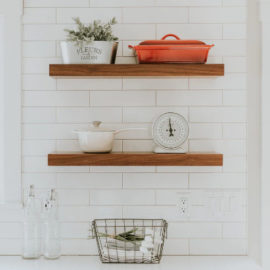

This article is an excerpt from the Shortform book guide to "Digital Minimalism" by Cal Newport. Shortform has the world's best summaries and analyses of books you should be reading.
Like this article? Sign up for a free trial here .
Do you feel like you waste your leisure time on unproductive activities that add neither value nor enjoyment? Wondering what to do in your free time that will be both refreshing and rewarding?
Many people spend their free time on low-quality leisure activities which don’t contribute much value to their life. If you want to enjoy high-quality leisure, you need to be intentional about it and plan what to do in your free time well in advance.
Here are some things to keep in mind as you plan what to do in your free time.
Reclaiming Leisure: What to Do in Your Free Time
Many people approach their free time with a mindset that leisure is not something to be structured and planned ahead, that it should be flexible. But if you don’t plan what to do in your free time in advance, you’ll most likely end up spending it on mindless, low-quality leisure activities that don’t contribute much value to your life and that don’t energize you.
Brainstorm High-Quality Leisure Activities
As you think of the ways you could fill your newfound free time, consider the following three principles of high-quality leisure activities:
1) Demanding activities are more rewarding than passive ones. Leisure evokes images of reclining, relaxing, and putting your feet up. At the end of a long, tiring day, most people want nothing more than to zone out and have no commitments. While it can be helpful to do this occasionally, spending your free time this way often leaves you feeling more drained than rested. By contrast, dedicating your leisure time to demanding activities actually energizes you more than idly passing the time. When you learn a new skill or finish a task, it leaves you feeling uniquely proud and accomplished. The more energy you invest in your leisure, the more value you’ll gain.
2) Humans get satisfaction and self-worth from making things with their hands. High-quality leisure includes craft—which entails using a skill to practice or create something. By this definition, crafts encompass building a DIY headboard as well as practicing a song on the guitar. Humans are driven to prove their self-worth, and when you create something, you end up with a finished product that you can point to as proof of your competence. Without concrete evidence of your ability, it’s easy to resort to online platforms in search of validating likes and retweets.
3) In-person, structured social activities are rejuvenating. Certain leisure activities—like competitive games and sports—create an environment for supercharged socializing, where the people involved can interact more intensely than they would in normal conversations. For example, it would be inappropriate to talk trash, yell encouraging words at someone, or chest bump at a cocktail party, but these displays are encouraged when you’re playing kickball with friends. You can find opportunities for this kind of social interaction in volunteer activities, recreational sports leagues, and group projects, such as building a local skating rink. Supercharged socializing is an energizing and rewarding way to spend your leisure time.
In the spirit of digital minimalism, there is a growing movement of people using technology to support leisure activities instead of relying on technology to be the activity. First, you can go online to find communities of people who share your interests so that you can connect with them in person. Second, if you’re picking up a new skill or hobby, you can find detailed instructions, how-to videos, and sources for obscure materials and tools online.
Strategies for Upgrading Your Leisure
From woodworking to volunteering, you have a wide array of high-quality leisure options to fill your time. Consider these strategies to get the most out of your downtime:
1) Build or fix something new each week. As a whole, people aren’t as handy as they used to be: Many people don’t know how to change a tire or weld a gate—they just Google an auto shop or order a new gate on Amazon. However, as we talked about, creating something with your hands is a rewarding experience.
For six weeks, make a commitment that each week, you will learn a new skill and then use that skill to fix, create, or learn something new. These projects could include changing the oil in your car, installing a light fixture, starting a garden, building a headboard, or learning a new technique on an instrument. Start with relatively easy skills and projects. Each success will boost your confidence and motivation to continue learning and taking on increasingly challenging projects.
2) Schedule time for low-quality leisure. Decide in advance how much time you’ll spend on low-quality leisure activities, such as browsing social media or watching Netflix. This strategy has two benefits: First, creating time limits for your low-quality leisure prevents those activities from stealing time away from high-quality leisure. Second, this creates a compromise for reducing your digital use. If you try to completely abandon your digital habits, you’re more likely to relapse when you have the urge to log on. Instead, this approach builds in time to get your fix, while still protecting your commitment to incorporate more high-quality activities. As you experience the benefits of dedicating the rest of your leisure time to high-quality activities, you’ll naturally want to allocate less time to digital use.
3) Join a group. Enjoy the benefits of regular, structured social interactions by joining a church group, volunteer organization, fitness club, or some other association—whether the unifying mission is serious or playful. Connecting with other people in pursuit of a common goal is uniquely rewarding. Although getting together with other people to work toward a shared goal brings inevitable logistical and emotional frustrations, it’s worth it.
Be Strategic About Your Leisure Time
As tempting as it may be to leave your leisure time unplanned and unstructured, that approach seldom leaves you feeling refreshed and fulfilled. Instead, create leisure plans ahead of time, so that when you have free time, you already know how you want to spend it.
First, make a seasonal leisure plan. At regular intervals throughout the year—according to season, quarters, semesters, or another measure—create a plan for how you want to spend your leisure time during that season. The plan should include objectives, or specific goals you want to achieve. With each objective, identify strategies for accomplishing that goal and define what success or completion will entail. For example, your objective may be to learn how to play your favorite Beatles songs on guitar, and your strategies can include practicing regularly and scheduling a party at the end of the season where you’ll perform the songs. Your plan should also include habits, which are regular behaviors and activities you’d like to do on an ongoing basis. Habits don’t have to tie in with a specific goal—rather, they are behaviors that you want to maintain because they support your values or interests.
Second, make a weekly leisure plan, which will help you to execute the goals and in your seasonal plan. At the start of every week:
- Review your seasonal plan as well as your calendar for the upcoming week.
- Find places in your calendar where you can schedule time to work on each of your seasonal objectives.
- Review the habits listed in your seasonal plan—you don’t need to specifically schedule them, but revisiting them in this way keeps them front-of-mind so that you can remember to follow through with them as the week goes on.
- Reflect on how you carried out those habits during the week prior. This reflection provides more motivation to stick with your habits in the upcoming week—since you know you’ll review your performance next week—and it helps to recognize whether certain habits are infeasible.
Although it may feel rigid to create so much structure in your leisure life, seasonal and weekly planning enable you to maximize your downtime, which enables you to enjoy it even more. Additionally, planning ahead can help you find places in your schedule to squeeze in more leisure. For example, during your weekly planning session, you may notice that Wednesday will be a light day at work, and you can plan to leave the office early so that you can take a bike ride before your evening plans.
Reflection: How Can You Upgrade Your Leisure Time?
Reflect on how you could enjoy more high-quality leisure time.
- What are a few of your most common leisure activities?
- Give one or two examples of high-quality leisure activities you would do if you had more time.
- If you were to build or fix something each week, what would you do the first week?
- If you were to join a group or association, which one might you join?
- Name one objective or habit you might include in a seasonal leisure plan.

———End of Preview———
Like what you just read? Read the rest of the world's best book summary and analysis of Cal Newport's "Digital Minimalism" at Shortform .
Here's what you'll find in our full Digital Minimalism summary :
- Why you're addicted to technology (and how tech companies feed your addictions)
- How a focus on social media is bad for real-life relationships
- How to transform your tech habits to get the best benefits without the drawbacks






